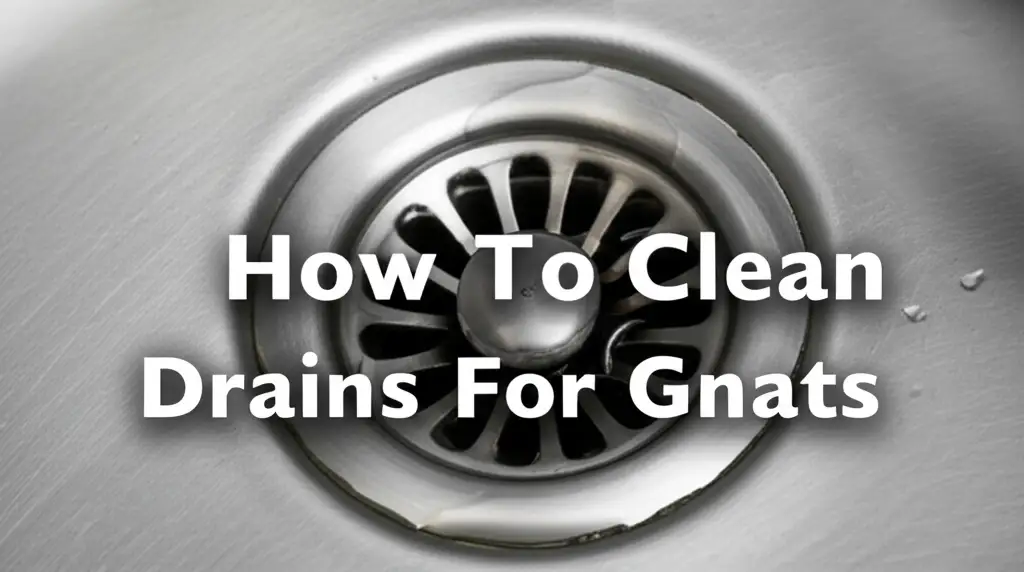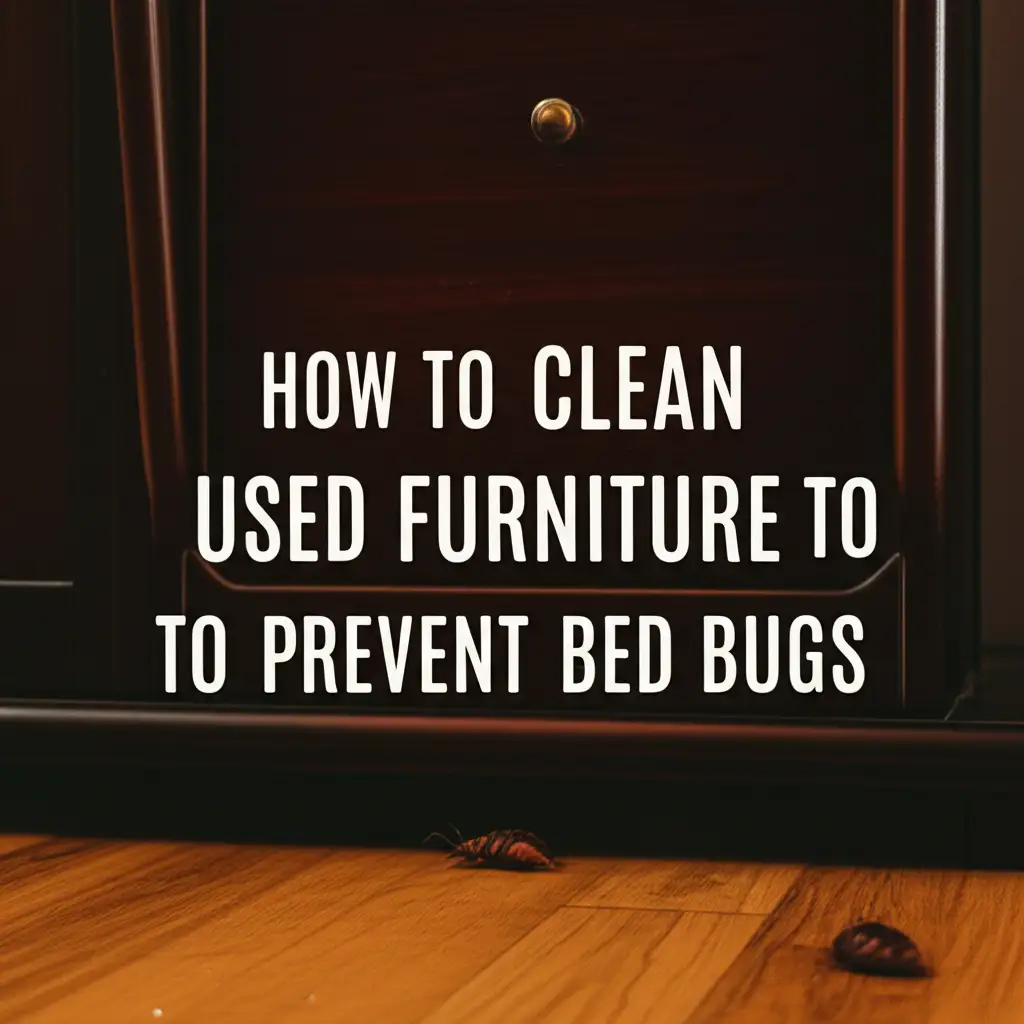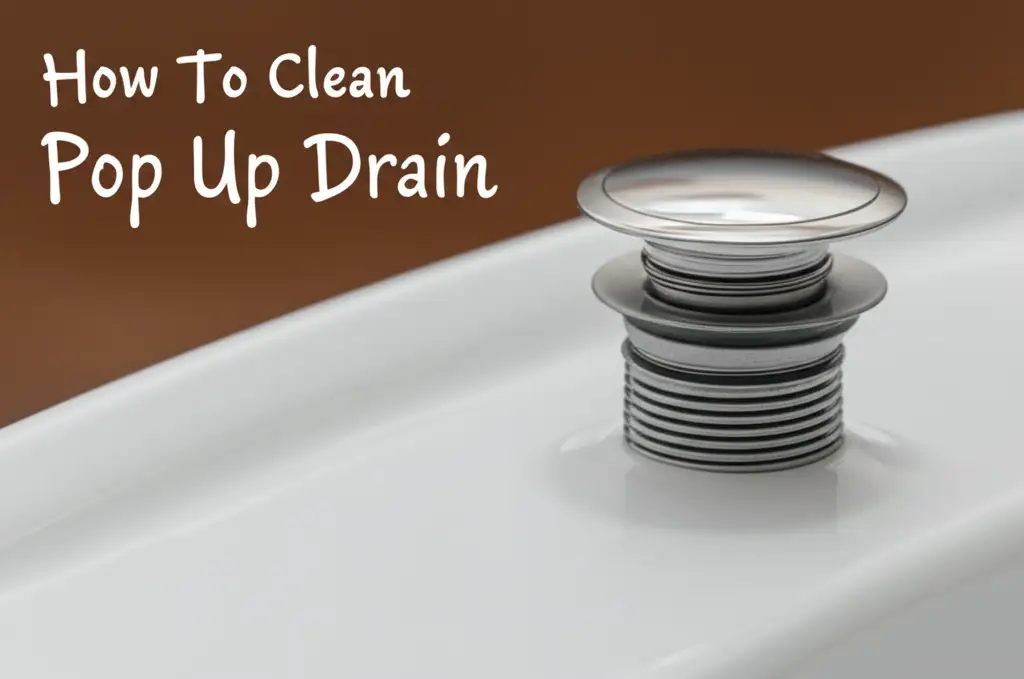· Pest Control · 19 min read
How To Clean Drains For Gnats

Banish Drain Gnats: How To Clean Drains For Gnats Effectively
Imagine walking into your kitchen or bathroom, and a tiny swarm of flying insects greets you. These are often gnats, specifically drain gnats or sewer flies. They are small, annoying, and seem to come out of nowhere. Many people wonder, “How to clean drains for gnats?” I know the frustration of finding these pests buzzing around my sinks. They thrive in damp, organic-rich environments, making your household drains a perfect breeding ground. This article will show you exactly how to clean drains for gnats. We will explore simple steps, effective methods, and essential prevention tips. Get ready to reclaim your home from these unwanted visitors.
Takeaway
- Identify drain gnats by their small size and erratic flight.
- Remove their food source and breeding ground in the drain.
- Use natural cleaners like vinegar and baking soda.
- Consider enzyme cleaners for stubborn clogs.
- Maintain clean drains regularly to prevent future infestations.
To clean drains for gnats, you must eliminate their breeding ground. This involves removing the organic sludge and debris inside your pipes. Use a combination of physical cleaning, natural solutions like baking soda and vinegar, or targeted enzyme drain cleaners. Consistent cleaning prevents these pests from returning.
Understanding Drain Gnats: Identification and Lifecycle
Drain gnats are small, dark, winged insects. They are also known as drain flies or moth flies. They look a bit like tiny moths because of their fuzzy bodies and wings. These insects are usually about 1/8 inch long. Their flight is often erratic. They tend to jump or fly in short bursts, not like the straight flight of a fruit fly.
You often find drain gnats near drains. They can be in kitchens, bathrooms, or laundry rooms. These areas typically have standing water or damp conditions. Drain gnats usually appear at night. This is when they are most active.
Drain gnats have a short but impactful lifecycle. Adult female drain gnats lay their eggs in the organic sludge inside drains. This sludge is a mixture of hair, soap scum, food particles, and other debris. The eggs hatch into larvae within 32 to 48 hours. Larvae are small, worm-like creatures. They feed on the organic matter in the drain. The larvae develop into pupae in about 9 to 15 days. Finally, adult gnats emerge from the pupae after 20 to 28 hours. The entire lifecycle, from egg to adult, takes about one to three weeks.
The adult drain gnat lives for about two weeks. During this time, it continues the breeding cycle. This rapid reproduction means a small problem can quickly become a large infestation. Understanding this lifecycle is key to effective drain cleaning for gnats. We need to break this cycle to eliminate them. Simply killing the flying adults does not solve the problem. You must remove their breeding ground in the drain.
Why Gnats Love Your Drains: Common Causes
Gnats love your drains for very simple reasons. Drains provide everything they need to thrive. These tiny insects seek out damp, dark, and secluded places. Your pipes offer all these conditions. They are especially attracted to the organic material that builds up inside pipes. This material is their primary food source and breeding ground.
One major cause is accumulated organic matter. Over time, hair, soap scum, grease, food particles, and other debris get trapped in your drains. This sticky, slimy film lines the inside of your pipes. This sludge provides a perfect nursery for drain gnat eggs. It also feeds the larvae once they hatch. Without this organic matter, drain gnats cannot survive or reproduce.
Slow drains also contribute to the problem. If water does not flow freely down your drain, it leaves behind more moisture. This excess moisture creates an ideal environment for gnats. Stagnant water encourages the growth of the organic film. It also makes the area more hospitable for egg-laying. A slow drain means more food and a better home for gnats.
Infrequently used drains are another common culprit. Drains in guest bathrooms, utility sinks, or laundry rooms might not get regular water flow. This allows organic matter to dry out and stick to the pipes. When water does eventually flow, it re-wets the sludge, making it attractive to gnats. The lack of regular flushing also means any existing larvae or eggs remain undisturbed.
Cracked pipes or leaky seals can also create issues. Even a small leak can keep the surrounding area perpetually damp. Gnats might breed in these hidden, wet spots outside the main drain. They then travel into your home through the drain opening. Checking for and repairing leaks is important for preventing gnat infestations. Maintaining clear and free-flowing drains is your best defense against these annoying pests.
Preparing for Battle: Tools and Safety First
Before you begin to clean drains for gnats, gather your tools. You need a few basic items to ensure a thorough cleaning. Having everything ready saves time and makes the process smoother. I always start by checking my cleaning cabinet.
Here are the essential tools you will need:
- Boiling Water: This is your first line of attack. Hot water helps loosen organic matter and kill adult gnats, eggs, and larvae.
- Baking Soda: A natural abrasive and odor absorber. It reacts with vinegar to create a fizzy cleaning action.
- White Vinegar: An acidic cleaner that helps break down grease and scum. It also acts as a disinfectant.
- Drain Brush or Pipe Cleaner: A flexible brush helps you scrub the inside of the drain opening and upper pipe sections. This gets rid of visible gunk.
- Bucket or Bowl: To catch any overflow or dirty water during cleaning.
- Rubber Gloves: Protect your hands from cleaning solutions and drain grime.
- Old Cloth or Sponge: For wiping down surfaces around the drain.
- Flashlight: To inspect the drain more closely if needed.
Safety is paramount when cleaning drains. You are dealing with hot water and cleaning agents. Always wear rubber gloves to protect your skin. If using stronger chemical cleaners later, ensure good ventilation in the area. Open windows or turn on exhaust fans. Never mix different chemical drain cleaners. This can create dangerous fumes. Also, avoid looking directly down the drain when pouring hot water or chemicals. Splashes can cause burns or irritation. Remember, the goal is a clean drain, but your safety comes first. Take your time with each step.
Natural Solutions: Cleaning Drains with Household Items
Many people prefer using natural solutions. These methods are effective and safe for your pipes. They avoid harsh chemicals. I often reach for these common household items first.
The Baking Soda and Vinegar Method
This is a classic and highly effective way to clean drains for gnats.
- Pour Boiling Water: Start by pouring a pot of boiling water down the affected drain. This helps loosen any grease or sludge. It also kills some of the adult gnats and larvae. Be careful to pour slowly and avoid splashes.
- Add Baking Soda: Next, pour half a cup of baking soda down the drain. Try to get as much as possible directly into the drain opening. Let it sit for a few minutes. This allows the baking soda to absorb some moisture and odors.
- Follow with Vinegar: Pour one cup of white vinegar down the drain after the baking soda. You will hear a fizzing sound. This is the chemical reaction between the baking soda (a base) and vinegar (an acid). This reaction creates foam that helps scrub the inside of the pipes.
- For more specific uses of vinegar in cleaning, consider exploring how to clean shower with vinegar. The principles of vinegar’s acidity apply to various cleaning challenges.
- Let it Sit: Let the baking soda and vinegar mixture sit for at least 30 minutes, or even overnight if possible. The longer it sits, the more time it has to break down the organic matter.
- Flush with Hot Water: Finally, flush the drain with more hot water. This washes away the loosened gunk and any remaining baking soda and vinegar residue. Ensure the water flows freely.
Salt, Baking Soda, and Vinegar Combo
This method adds an abrasive element to the natural cleaning process.
- Combine Ingredients: Mix half a cup of salt, half a cup of baking soda, and one cup of white vinegar in a bowl. The salt acts as a scrubber.
- Pour Down Drain: Pour this mixture down the drain. The salt helps to scour the pipe walls as it goes down.
- Wait and Flush: Let it sit for several hours or overnight. Then, flush the drain thoroughly with hot water.
Borax, Salt, and Vinegar Solution
Borax is a natural mineral. It helps with cleaning and deodorizing.
- Mix Solution: Combine 1/4 cup of borax, 1/4 cup of salt, and 1/2 cup of white vinegar.
- Apply to Drain: Pour this mixture down the drain.
- Allow to Work: Let it sit for at least an hour.
- Rinse Thoroughly: Flush with hot water.
These natural methods are great for regular maintenance and mild infestations. They are safe for most plumbing systems. If you have drain gnats, these steps are a good starting point to clean drains for gnats effectively.
Chemical Warfare (When Necessary): Using Drain Cleaners Safely
Sometimes, natural methods are not enough. Stubborn clogs or severe gnat infestations may require stronger action. Chemical drain cleaners can be effective. However, they demand careful use. I only turn to these products as a last resort.
There are different types of chemical drain cleaners:
- Caustic Drain Cleaners: These contain lye (sodium hydroxide) or potash (potassium hydroxide). They create heat to dissolve organic matter. They are very corrosive.
- Oxidizing Drain Cleaners: These contain bleach, peroxides, or nitrates. They create gas and heat to break down clogs. They can be very powerful.
- Acid Drain Cleaners: These contain high concentrations of sulfuric acid or hydrochloric acid. They dissolve grease, hair, and food. These are the most dangerous types. They are usually for professional use only.
When choosing a chemical cleaner, look for products specifically designed for organic clogs or drain fly control. Read the product label carefully. Follow all instructions precisely. Never guess the right amount or mixing instructions.
Steps for Using Chemical Drain Cleaners:
- Read Instructions: Every chemical cleaner has specific directions. Read them completely before starting. Pay attention to safety warnings.
- Ensure Ventilation: Open windows and turn on exhaust fans. Chemical fumes can be harmful. Good airflow protects your lungs.
- Wear Protective Gear: Always wear rubber gloves and eye protection. Chemical splashes can cause serious injury.
- Clear Standing Water: If there is standing water in the sink, remove it first. Most chemical cleaners work best when poured directly into the drain.
- Pour Cleaner Slowly: Pour the recommended amount of cleaner directly into the drain. Avoid splashing.
- Wait the Recommended Time: Do not leave the cleaner in the drain longer than instructed. Excess time can damage pipes.
- Flush Thoroughly: After the waiting period, flush the drain with plenty of hot water. This washes away the cleaner and dissolved gunk. Ensure the water flows freely.
- Avoid Mixing: Never mix different chemical drain cleaners. This can produce toxic gases or cause explosive reactions. Do not use a chemical cleaner if you have recently used a natural solution like vinegar, as reactions can still occur.
Chemical cleaners can be effective for severe drain gnats issues. They break down the organic matter where gnats breed. However, consistent use can be harsh on pipes. They also do not address the root cause of slow drains or continuous organic buildup without ongoing maintenance. Use them sparingly and with utmost caution.
Deep Clean Your Drains: Addressing Stubborn Infestations
Sometimes, surface-level cleaning is not enough. If gnats persist, you need a deep clean. This means getting directly into the trap or even further down the pipe. I learned that addressing the core problem is essential for long-term relief.
Using a Drain Brush or Pipe Cleaner
A drain brush or pipe cleaner is excellent for physical removal of sludge.
- Remove the Stopper: Take out your drain stopper or pop-up assembly. This gives you direct access to the drain opening.
- Scrub the Sides: Use a long, flexible drain brush. Insert it into the drain opening. Rotate and push the brush as far as it can go. Scrub the inside walls of the pipe. You will likely pull out a lot of slimy, dark gunk. This is what the gnats feed on.
- Rinse Thoroughly: After scrubbing, run hot water down the drain to flush away any loosened debris.
- For similar issues where deep cleaning is required to address organic buildup, consider how to clean mold under sink. The principles of identifying the source and removing the organic matter are very similar.
Disassembling the P-Trap
The P-trap is the curved pipe directly under your sink. It holds a small amount of water to prevent sewer gases from entering your home. It also catches a lot of the organic debris that drain gnats love.
- Place a Bucket: Put a bucket directly under the P-trap. This will catch any water or debris that spills out.
- Loosen Nuts: Most P-traps have slip nuts that connect them to the sink tailpiece and the wall drain. Loosen these nuts by hand or with channel lock pliers.
- Remove the Trap: Carefully remove the P-trap. Water will come out.
- Clean the Trap: Use a bottle brush or old rag to physically clean the inside of the P-trap. Scrape out all the slimy buildup. This is often where the worst of the gnat breeding occurs.
- Reassemble: Reattach the P-trap. Make sure the nuts are hand-tightened first, then use pliers for a final snug fit. Run water to check for leaks.
Enzyme Drain Cleaners
Enzyme cleaners are different from harsh chemicals. They contain beneficial bacteria and enzymes. These enzymes digest organic matter in your pipes. They break down grease, hair, and food particles. This eliminates the gnats’ food source.
- Choose a Quality Product: Select an enzyme cleaner specifically designed for drain maintenance or drain flies.
- Follow Instructions: Pour the recommended amount down the drain, usually before bed. This allows the enzymes to work overnight without being washed away by water flow.
- Repeat as Needed: Enzyme cleaners work slowly. They may require multiple applications for severe buildup. They are excellent for long-term prevention.
Deep cleaning, especially disassembling the P-trap, directly removes the gnats’ home. Combined with regular enzyme treatments, this approach tackles even stubborn infestations.
Beyond the Drain: Preventing Future Gnat Problems
Cleaning your drains thoroughly is a major step. However, prevention is key to keeping gnats away for good. You want to avoid asking “How to clean drains for gnats?” again. I learned that a consistent routine saves a lot of hassle.
Regular Drain Maintenance
Consistency is vital. Do not wait for gnats to appear.
- Boiling Water Flush: Pour a pot of boiling water down all your drains once a week. This simple action helps dislodge minor buildup.
- Baking Soda and Vinegar Flush: Perform the baking soda and vinegar treatment every two to four weeks. This keeps organic matter from accumulating.
- This technique is very similar to how you might approach how to clean dishwasher with vinegar, emphasizing the power of natural solutions for maintenance.
- Use Enzyme Cleaners: Incorporate a monthly enzyme drain cleaner treatment. These cleaners proactively break down organic material. They prevent clogs and eliminate gnat food sources.
Addressing Other Moisture Sources
Drains are not the only place gnats love.
- Leaky Faucets or Pipes: Fix any leaks immediately. Even a slow drip creates constant moisture. This attracts gnats and other pests.
- Drip Pans: Check the drip pans under refrigerators or dishwashers. These can accumulate water and mold. Clean them regularly.
- Wet Sponges/Rags: Do not leave wet sponges or rags near sinks. Wring them out and let them dry completely.
- Plant Saucers: Empty plant saucers of excess water. Stagnant water in these can also attract gnats.
- Garbage Disposals: Ensure your garbage disposal is clean. Grind ice cubes or citrus peels regularly. This helps remove food particles and keeps it fresh.
Proper Waste Management
Food waste is a major attractant.
- Seal Trash Cans: Use trash cans with tight-fitting lids. Empty them frequently, especially those with food waste.
- Compost Bins: If you have a compost bin, keep it sealed. Ensure it is away from your home.
- Fruit and Vegetables: Store ripe fruits and vegetables in the refrigerator. Do not leave them exposed on counters.
Physical Barriers and Traps
For lingering adults while you treat the source:
- Drain Covers: Place fine mesh drain covers over drains when not in use. This prevents adult gnats from entering or exiting.
- Fly Traps: Use sticky fly traps near affected drains. These will catch adult gnats. This helps reduce the flying population. However, it does not address the source of the infestation.
- If you’re dealing with fruit flies, a similar approach to trapping and source elimination is discussed in how to clean drains from fruit flies. The strategies are often interconnected.
By combining regular drain cleaning with overall home hygiene, you create an environment hostile to gnats. Prevention is more effective and less frustrating than reacting to an infestation. Make these practices part of your cleaning routine.
When to Call a Professional: Beyond DIY Solutions
Most drain gnat problems respond well to DIY cleaning methods. However, there are times when you should call a professional. Knowing when to get expert help saves time and prevents further issues. I understand the desire to fix things myself, but sometimes it is just not enough.
Here are scenarios where professional help is recommended:
- Persistent Infestations: You have tried multiple DIY methods. You cleaned your drains thoroughly. Yet, gnats keep returning within days. This suggests a deeper problem. The breeding source might be beyond your reach. It could be in a pipe section you cannot access.
- Multiple Affected Drains: Gnats appear in several drains throughout your home. This points to a more widespread issue. It might be a problem in your main sewer line. This is a job for a plumber.
- Recurring Clogs: You frequently experience slow drains or clogs. This indicates a significant buildup inside your pipes. A simple drain cleaner might not clear it. A professional plumber has specialized tools. They can use drain snakes or hydro-jetting equipment. These tools clear stubborn blockages effectively.
- Foul Odors: You notice strong, persistent foul odors coming from your drains. This often signals a large accumulation of decaying organic matter. This is a prime breeding ground for gnats. It could also indicate a more serious plumbing issue.
- Signs of Damaged Pipes: You suspect a broken or leaking pipe. This might be due to water stains on ceilings or walls. Damp spots around the floor near drains are another sign. Gnats can breed in these hidden, wet areas. Repairing damaged pipes requires professional expertise.
- For issues related to damp environments leading to pests, consider how to clean mold in shower. Professional help might be needed if mold is extensive or recurs, similar to severe gnat infestations.
A professional plumber can conduct a camera inspection. This allows them to see inside your pipes. They can pinpoint the exact location and nature of the blockage or damage. They have industrial-strength cleaning equipment. This equipment removes even the toughest buildup. They can also advise on long-term solutions. This might include pipe repairs or replacements. Investing in professional help ensures the problem is solved completely. It protects your plumbing system from further damage. It also provides lasting relief from drain gnats.
FAQ Section
Q1: What are drain gnats, and are they harmful?
Drain gnats, also known as drain flies or moth flies, are small, fuzzy insects. They thrive in damp environments like drains. They are not harmful to humans or pets. They do not bite or transmit diseases. However, they are annoying and indicate a hygiene issue. Their presence means organic matter is accumulating in your pipes.
Q2: How do I know if I have drain gnats or fruit flies?
Drain gnats have fuzzy bodies and wings. Their wings are often held roof-like over their bodies. They fly erratically, often in short hops. Fruit flies are smaller, have clear wings, and usually red eyes. They are attracted to fermenting fruit and sweet substances. Drain gnats are strictly found near organic-rich drains.
Q3: Can gnats really come from drains?
Yes, gnats absolutely come from drains. Female drain gnats lay their eggs in the slimy organic film that builds up inside pipes. This film provides food for their larvae. Once they mature, adult gnats emerge from the drain opening. They then fly into your living spaces.
Q4: How often should I clean my drains to prevent gnats?
For prevention, flush your drains with boiling water once a week. Perform a baking soda and vinegar treatment every two to four weeks. Consider using an enzyme drain cleaner monthly. Regular maintenance is crucial to prevent the buildup of organic matter. This buildup is what attracts gnats.
Q5: Is bleach effective against drain gnats?
Bleach can kill adult gnats on contact. However, it is not effective for removing the organic film where gnats breed. Bleach often flows past the film without dissolving it. It is also corrosive to pipes over time. Furthermore, mixing bleach with other cleaners can create dangerous fumes. Stick to methods that physically remove the sludge.
Q6: What if gnats return after cleaning?
If gnats return after cleaning, the breeding source was not fully eliminated. This means there is still organic sludge in your pipes. You might need to deep clean your drains more thoroughly. This includes scrubbing the P-trap. Consider using an enzyme cleaner for a longer period. If the problem persists, a professional plumber may be needed to inspect for deeper clogs or pipe damage.
Conclusion
Getting rid of drain gnats means understanding their lifecycle and preferred habitat. These annoying pests thrive on the organic sludge that builds up inside your pipes. Effective solutions involve systematically removing this breeding ground. We covered methods ranging from simple boiling water flushes to natural solutions like baking soda and vinegar. We also discussed enzyme cleaners and, when necessary, careful use of chemical drain cleaners. Physical cleaning tools, like drain brushes and P-trap disassembly, are vital for deep infestations.
My experience shows that prevention is always the best approach. Regular drain maintenance is essential. Fix any leaks promptly. Manage your waste effectively. These steps prevent future gnat problems. If you have a persistent infestation, or if clogs recur, do not hesitate to call a professional plumber. They have the tools and expertise for more severe issues. By following these comprehensive steps, you can successfully clean drains for gnats. You will enjoy a gnat-free home again. Make drain hygiene a priority to maintain a clean and pest-free living space.
- drain cleaning
- gnat removal
- pest control
- home hygiene
- DIY cleaning




